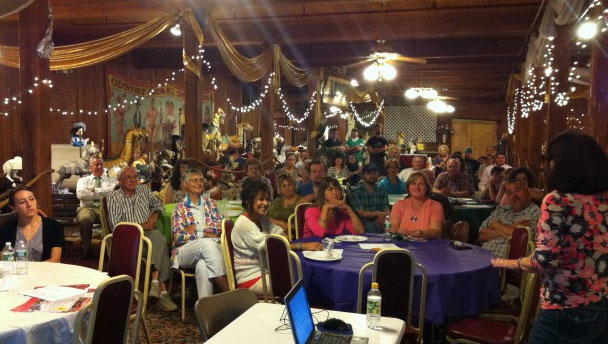 Do you feel like you’re part of the power structure behind how your city is developed? Most people don’t. In other words, many feel that the system isn’t legitimate.
Do you feel like you’re part of the power structure behind how your city is developed? Most people don’t. In other words, many feel that the system isn’t legitimate.
Power has to be seen as legitimate, or else its use has the opposite of its intended effect (not serving the people), according to acclaimed author and sociologist, Malcolm Gladwell. The powerful are judged not by their ends but their means, and that means is measured by legitimacy.
Provide legitimacy and people will come out and support you enthusiastically.
Legitimacy is based on three things:
1. The people who are asked to accept the system have to feel like they have a voice – if they speak up, they will be heard.
2. The system has to be predictable. There has to be a reasonable expectation that the rules tomorrow are going to be roughly the same as the rules today.
3. The system has to be fair. It can’t treat one group differently from another.
How is crowdsourced placemaking; applying the wikipedia approach to creating places, a legitimate system?
- The people feel like they have a voice. They are encouraged to participate at monthly meet-ups. They are provided a 24/7 platform to submit, upvote and campaign for ideas they feel will improve the community. They establish an entity, that they name themselves, to define what should be invested in to enhance their quality of life.
- It is predictable. As stated above, everyone has the same opportunity to be heard, to contribute, on an ongoing basis, and encouraged to form support groups for the ideas they collectively value the most. There are clear objectives and deadlines regarding how their support for the most valued ideas translates into actual investment to implement those very ideas. Weekly and monthly updates are provided so everyone is aware of what’s going on.
- It is fair. In crowdsourced placemaking, every person counts, not every dollar. If you can’t upvote online for the ideas you believe in, you can do it in person. In addition, those with the investment capacity to fundamentally change a community’s built environment, and their culture and lives to go with it, are transparent. There is a commitment to keep the community residents involved in shaping what is most personal to them, the places where they live and work.